BUENAS NOCHES, AMERICAN CULTURE

BUENAS NOCHES
AMERICAN CULTURE

LATINA/O AESTHETICS OF NIGHT
Mara DeGuzmn
INDIANA UNIVERSITY PRESS
Bloomington and indianapolis
This book is a publication of
Indiana University Press
601 North Morton Street
Bloomington, Indiana 47404-3797 USA
iupress.indiana.edu
Telephone orders 800-842-6796
Fax orders 812-855-7931
2012 by Mara DeGuzmn
All rights reserved
No part of this book may be reproduced or utilized in any form or by any means, electronic or mechanical, including photocopying and recording, or by any information storage and retrieval system, without permission in writing from the publisher. The Association of American University Presses Resolution on Permissions constitutes the only exception to this prohibition.
 The paper used in this publication meets the minimum requirements of the American National Standard for Information Sciences Permanence of Paper for Printed Library Materials, ANSI Z39.48-1992.
The paper used in this publication meets the minimum requirements of the American National Standard for Information Sciences Permanence of Paper for Printed Library Materials, ANSI Z39.48-1992.
Manufactured in the United States of America
LIBRARY OF CONGRESS
CATALOGING-IN-PUBLICATION DATA
DeGuzmn, Mara.
Buenas noches, American culture : Latina/o aesthetics of night / Mara DeGuzmn.
p. cm.
Includes bibliographical references and index. ISBN 978-0-253-00179-5 (cloth : alk. paper) ISBN 978-0-253-00189-4 (pbk. : alk. paper) ISBN 978-0-253-00190-0 (electronic book)
1. American literatureHispanic American authorsHistory and criticism. 2. Night in literature. 3. Central American literatureHistory and criticism. 4. South American literature History and criticism. 5. Night in art. I. Title.
PS153.H56D44 2012
810.9'868073dc23
2012002234
1 2 3 4 5 17 16 15 14 13 12
FOR MY STUDENTS

CONTENTS

1. Dreaded Non-Identities of Night:
Night and Shadows in Chicana/o Cultural Production
PREFACE

A word on the organization of Buenas Noches, American Culture: Latina/o Aesthetics of Night. This study concentrates on Latina/o literature and some film and photography from the 1940s to the present, focusing chiefly on Latina/o cultural production during the last three decades. Though the study flows more or less chronologically within its individual parts, it also follows a spatial logic that arcs and spirals across the United States and between the Americas, exploring the groupings within and the sheer variety of Latina/o culture(s) as well as historical and contemporary connections among identities and locations. Chapter 1, on Chicana/o cultural production, is mostly situated in California and the Southwestern borderlands. Chapter 2, on continental U.S.-based Puerto Rican and Cuban American poets, concerns itself with the Hispanic Caribbean in relation to New York, New England, and the Midwest. Via the writings it examines, chapter 3 journeys to Central America, Guatemala, and Panama but also to New York, Los Angeles, and the Washington, DC, area as well as to Nicaragua and El Salvador. Chapter 4, on the transcultural night work of U.S.-based South American writers and one photographer, moves among the United States, South America, Spain, and Eastern Europe. Some segments of the arcs and spirals may be familiar to readers, and others surprising, disorienting, or vertiginous. Such were the mappings that unfolded before those tenuous instruments, my eyes, as they contemplated tropes of night in Latina/o cultural production. As for temporality, within the framework of the contemporary period this book shuttles back and forth not only between postmodernism and modernism but, via the works themselves and sometimes in the blink of an eye, between a pre-Columbian era and the twenty-third century (2280 ad, to be precise). Simultaneously, this study takes its time. The introduction shades into its subject matter through various deepening degrees to arrive at Latina/o aesthetics of night. Such is the fluidity of timemovements made simultaneously at very different speedsunder the auspices of night.
ACKNOWLEDGMENTS

For insightful remarks, conversations, and many other kinds of intellectual exchange over the years that helped me to see more keenly into the dark of this books subject matter during its conception, research, and composition, I would like to thank Arturo and Frederick Aldama, Frances Aparicio, Rane Ramn Arroyo, Stuart Bernstein, W. Fitzhugh Brundage, Bernadette Calafell, Brooke Church, Lucha Corpi, Mara Cotera, Elyse Crystall, Elizabeth and Luis de Guzmn, Samuel R. Delaney, Theresa Delgadillo, Arturo Escobar, Rebecka Rutledge Fisher, Mara Alicia Garza, Tanya Gonzlez, Nan Goodman, Kirsten Silva Gruesz, Minrose Gwin, Laura Halperin, Carlos Jimnez Cahua, Randall Kenan, Sherryl Kleinman, Michael P. Kramer, Alice Kuzniar, Larry La Fountain-Stokes, Antonio Lpez, Debbie Lpez, Ashley Lucas, Rita Martin, Claudia Milian, Amelia Mara de la Luz Montes, Achy Obejas, Brenda Palo, Richard Prez, Cecile Pineda, Della Pollock, John Rib, Jonathan Risner, Ralph Rodriguez, Mariana Romo-Carmona, Ruth Salvaggio, Mara Snchez, Betsy Sandlin, Alberto Sandoval-Snchez, Alan Shapiro, Glenn Sheldon, James Smalls, Patricia Juliana Smith, Margaret Diane Stetz, Xavier F. Totti, Luz Mara Umpierre, Antonio Viego, Linda Wagner-Martin, and Sue Wells. I would also like to thank Indiana University Press, notably Janet Rabinowitch, Jane Kathleen Behnken, Sarah Wyatt Swanson, Raina Nadine Polivka, Angela Burton, Marvin Keenan, and Kira Bennett as well as the anonymous readers of this manuscript for their thoughtful comments, their helpful suggestions, and their belief in this project. Many thanks to Denise Carlson for her careful indexing. I am grateful to The Institute for the Arts and Humanities as well as to the Department of English and Comparative Literature at the University of North Carolina at Chapel Hill for making research leave possible. My deep gratitude goes to my parents, Brooke Church, and my cat Cuchi for their presence.
BUENAS NOCHES, AMERICAN CULTURE

INTRODUCTION
CRITICALLY INHABITING THE NIGHT

Buenas Noches, Readers
Tropes of night in U.S. Latina/o arts take up the stigma of darkness as a condition to be inhabited ethno-racially and philosophically despite claims that the fate of U.S. Latina/os is to conform to an Anglo-American hegemony. Evocations of night might seem to be a way of making oneself palatable to a dominant Anglo culture through romanticization as people for whom the night is one long


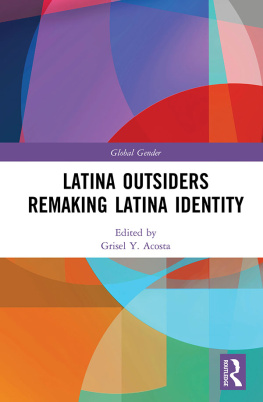

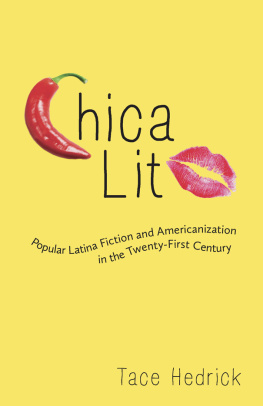
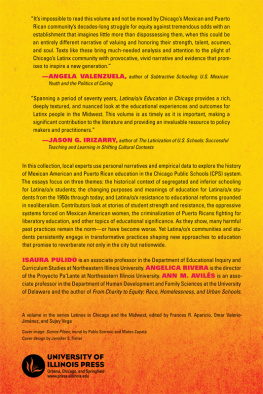
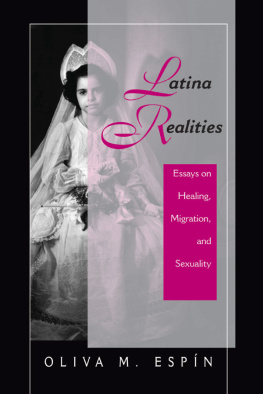
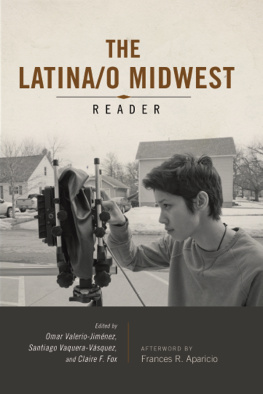
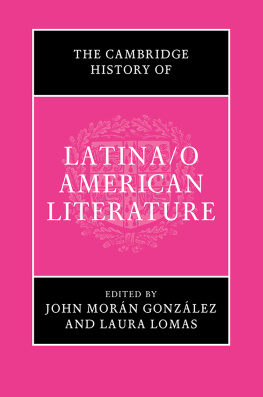
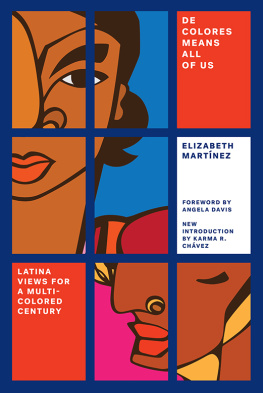
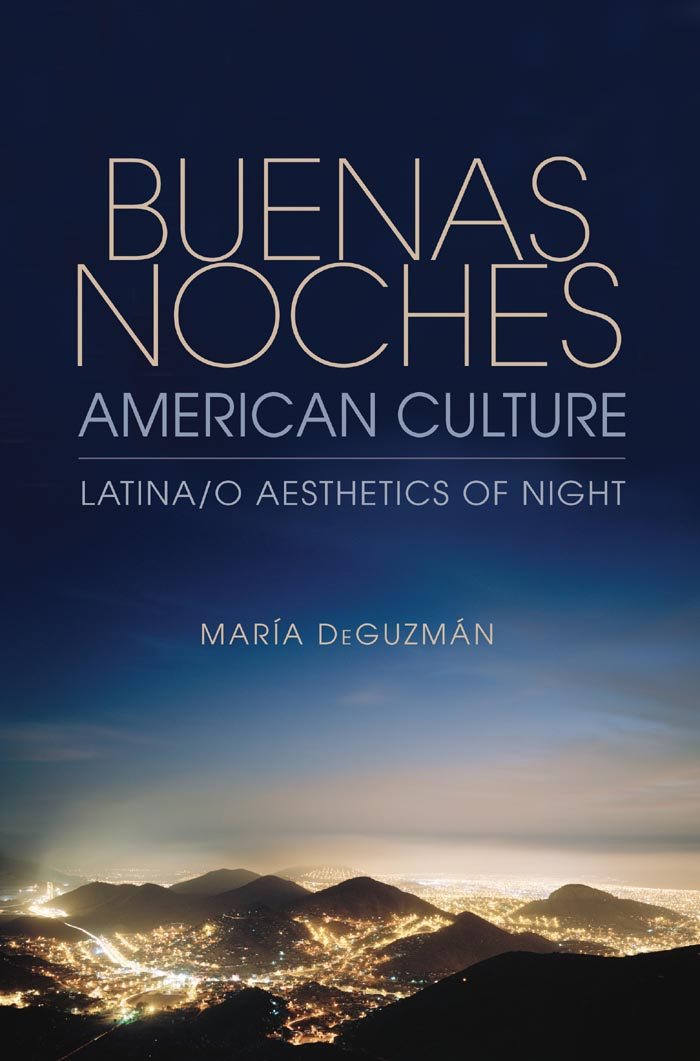

 The paper used in this publication meets the minimum requirements of the American National Standard for Information Sciences Permanence of Paper for Printed Library Materials, ANSI Z39.48-1992.
The paper used in this publication meets the minimum requirements of the American National Standard for Information Sciences Permanence of Paper for Printed Library Materials, ANSI Z39.48-1992.